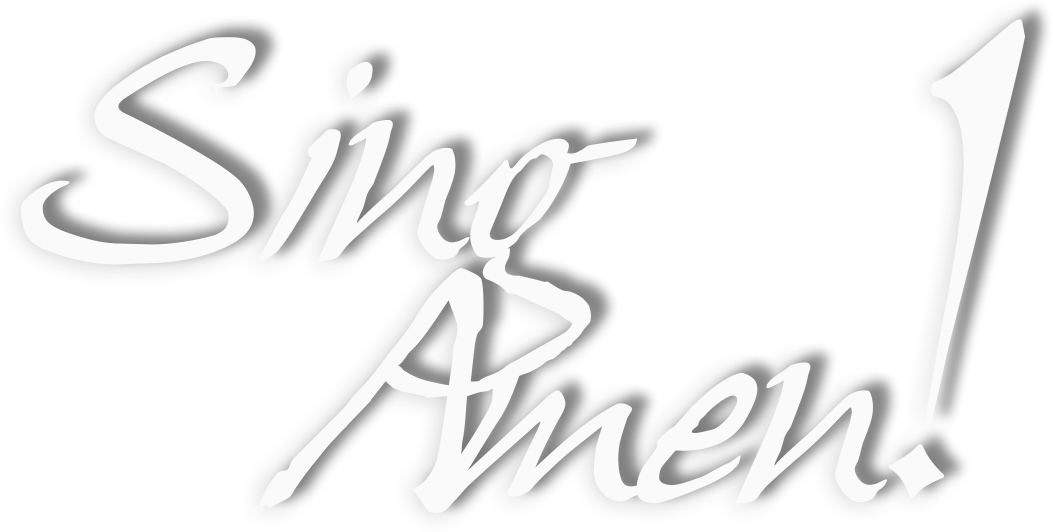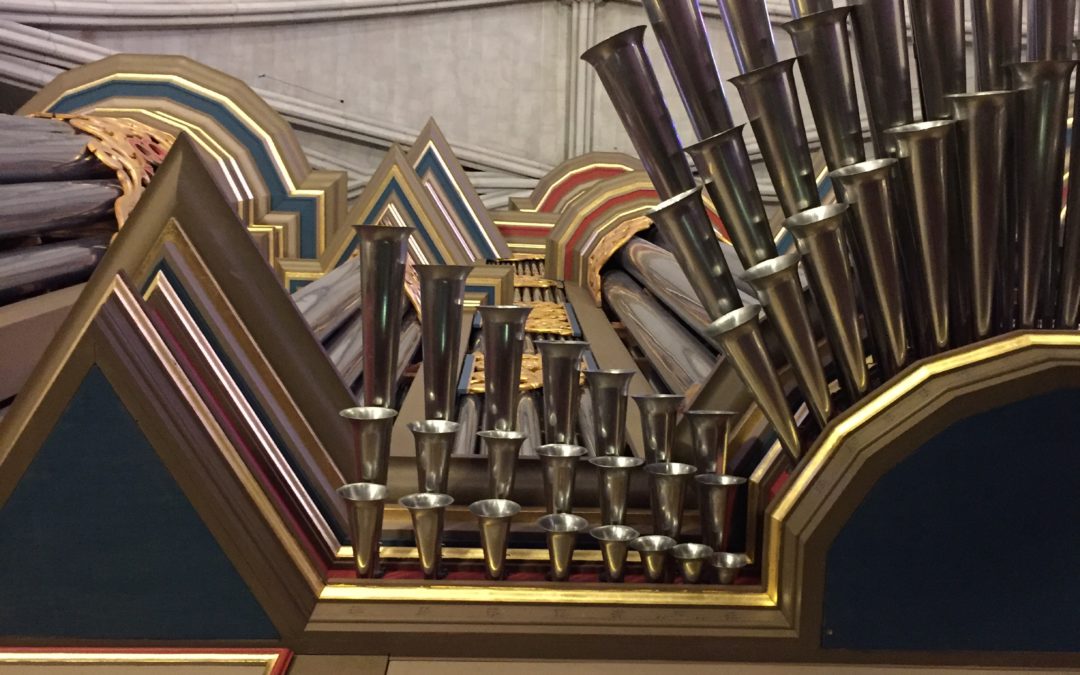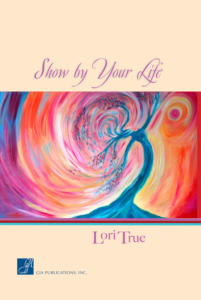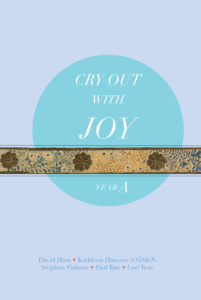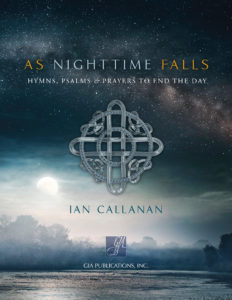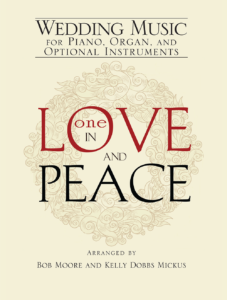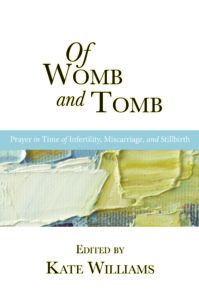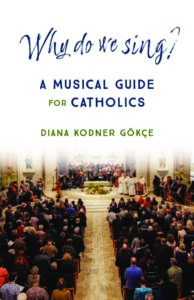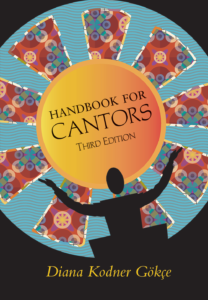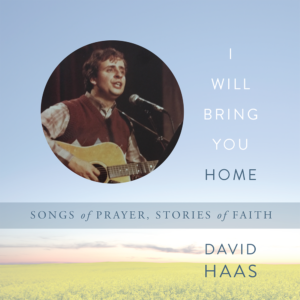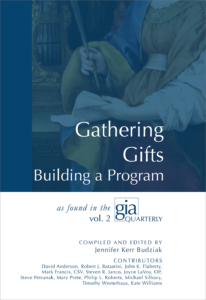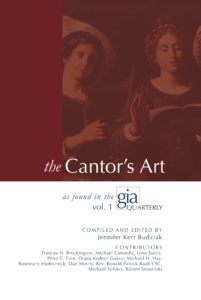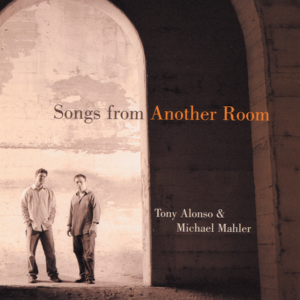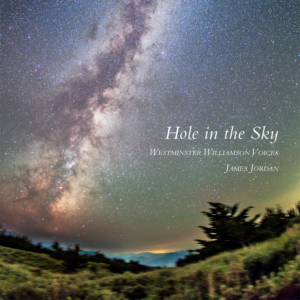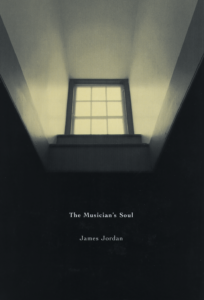Now that we have been through the basics of organ registration, we can talk about the more unusual stops on the organ, including the solo stops, the stops that imitate orchestral instruments, the chimes, the harp, the celesta, and the stops that are there for sound effects.
A solo stop refers to any rank of pipes that is intended to be used by itself, soloed out in a single line, with the other hand in accompaniment and (if needed) the pedals offering a supporting line to the accompaniment. Solo stops can be a single rank or combinations of ranks that can be used for this single line of music. To that end, many of the ranks we have already discussed can be used in this capacity, such as a Principal 8′, an Oboe 8′, a Flute 8′. All that is needed is for the other hand/pedals to have stops that are slightly softer overall to be sure that the solo line is heard.
To discuss how to solo out a melody in repertoire, let us take one of the most beloved pieces in the Orgelbüchlein, BWV 599-645, (J.S. Bach’s settings of 45 chorale preludes for the organ). For most students of the organ, the first Bach piece they are assigned is the Ich ruf’ zu dir, Herr Jesu Christ, BWV 639. Bach did not put registration suggestions on his organ music, so the player needs to learn the basics of Baroque registration in order to play his music, and more advanced players study how to register Bach pieces specifically. For most of us in the United States, organs have been built to play a wide variety of literature and service music from different time periods and regions of the world, but it is possible to effect a basic Baroque registration on almost any organ you have the honor of playing.
On a small two-manual organ, it is quite lovely to play this on the Great Principal 8′ for the right hand, and the Swell 8′ and 4′ flutes for the left hand, and use a light 16′ and 8′ for the pedal. That uses the Principal 8′ as the solo stop, although technically we would not refer to a Principal as a solo stop.
For a small, two-manual organ with a Swell Oboe 8′, you can use the Oboe for the right hand, and use the Great Flute 8′ for the left hand, same pedal. The Oboe is usually referred to as an ensemble reed, but is frequently used as a solo stop. If you have a larger instrument, you might use a stop called a Cornet, against the Swell Flutes 8′ and 4′. Here is such a rendition.
The picture below shows yet another alternate spelling for the Oboe/Hautbois/Hobo stop. And right next to it is the next stop you can read about, the Vox Humana. I must admit, the Vox Humana is a stop I have rarely used. It is frequently encountered in the organ music of César Franck, repertoire that my hands are too small to play without rearranging quite a few of the notes. It is intended to sound like the human voice singing. The Vox is not used the same way other solo stops are, to solo out one line. Instead, it is used homophonically, and usually with an 8′ flute paired with it. So if you imagine a hymn played on an 8′ flute, all four parts, with a choir of four voices singing it, that might be a bit of what a Vox Humana sounds like. More or less. The last church I played in had one, but the tuner was always working so hard on other reed stops, he didn’t have time to tune it, so I rarely made use of it. I figured it was more important to get my human-voice choir to sing in tune than to worry about that human-voice stop on the organ.
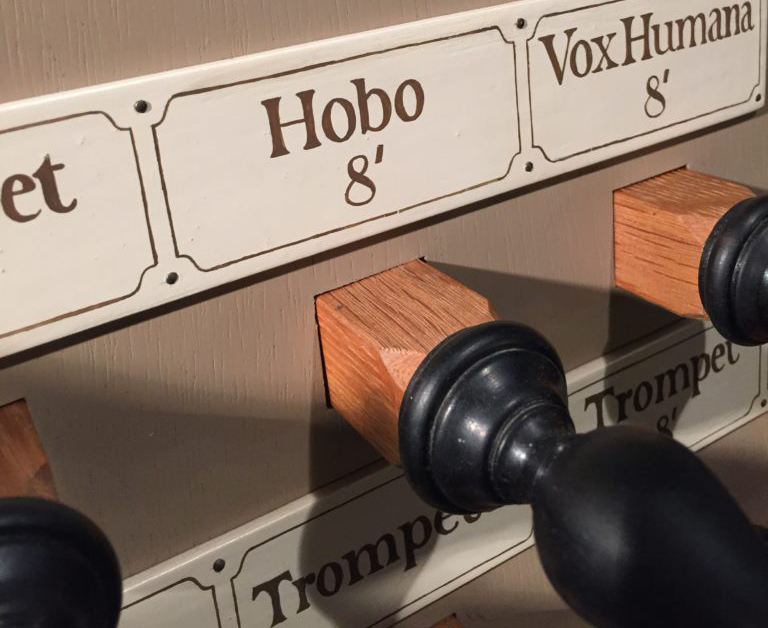
There are stops that are intended to be used only by themselves (such as the Vox Humana), and there are solo stops that can also be used in the ensemble (such as the Swell Oboe). The Harmonic Flute (usually found on the Great) on many organs is intended to be used as a solo orchestral stop, and most of the time you would not use it combined with other stops.
The picture below is of an 8′ Basset Horn, which I include here because 1) the picture is awesome (taken from the website of F. Booth & Son Voicers, Yorkshire, UK, and used here with permission), and 2) it is an example of the many varieties of stops and pipes you can find in a pipe organ. I don’t remember having the occasion to play an organ with a basset horn, but it serves as a great illustration of how varied and innovative organ building is all over the world. Depending on the instrument, it is likely that this reed stop could be used as a solo or ensemble reed.
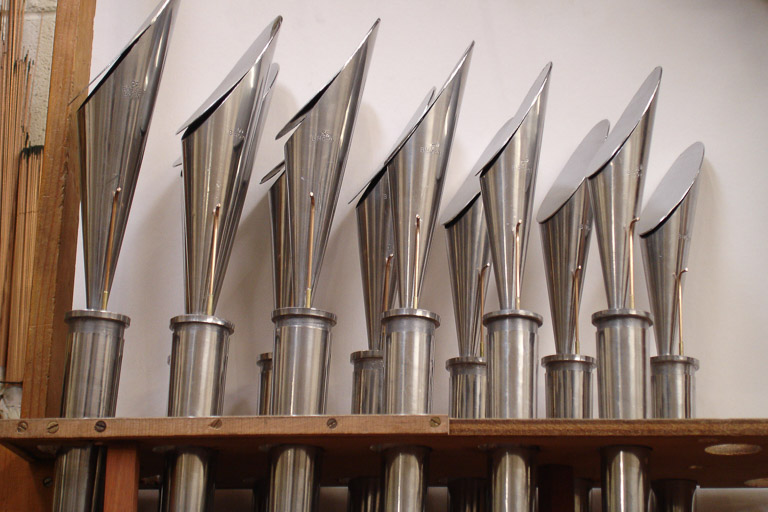
There are a multitude of solo stops that organ builders use when building their instruments, and to name just a few, they include the clarinet, English horn, krummhorn, and cornet (which has a number of ranks included in its composition).
One stop that falls into its own category is a Trumpet en chamade (see the featured image at the top of this post). These trumpets are very visible, jutting out horizontally from the case (so sometimes we call them the horizontal reeds, too) and striking in appearance as well as in sound and texture! They use very high wind pressure, and make a very piercing sound that can be heard over the rest of full organ. To this end I am putting it into the category of a solo reed stop, because if you play more than one note at a time on them, it can sound quite unpleasant (but that also depends on how loud the reed is, and how resonant your room is). This stop can be used for weddings to solo out a melody in place of a trumpet player, or to solo out the melody of a hymn on festival Sundays. However, they can be too loud for some, and I caution you to use them sparingly, (like hot sauce), and rarely play more than one or two notes at a time. Here is a perfect example, using the en chamade for the John Stanley Trumpet Voluntary.
As if all this wasn’t enough, organs have gadgets and fun things to play with. Most Americans know about the chimes, since they are used in many small instruments and indeed, the Möller organ I learned on had a set of chimes, usually used to mark a quiet moment in the service (such as a call to worship or as a communion meditation or some kind of prayer invocation). A church I played in recently had the organist play several notes on the chimes to notify the bridal party that it was time for the groomsmen/clergy to come out before the processional. When I was a child, the organist at our church played the melody of a quiet hymn on the chimes, the alto and tenor in the left hand, and the bass in the pedal. I think that was what she did for every communion meditation.
The Celesta is a different stop entirely, intended to replicate the same sound as the celesta in orchestral music. (Anyone who has heard Tchaikovsky’s Nutcracker Suite has heard a celesta.) It has also been called for in organ repertoire, most notably the Cortege et Litanie by Marcel Dupré. Interestingly, that performance, by Dupré himself, doesn’t use the Celesta, but uses his other option, a Principal 8′. Organs make use of harp and celesta stops for effect (and also for fun). The celesta is not to be confused with the celeste, which will be discussed in Part 7. The harp is basically the same as the celesta, which is pitched an octave higher than the harp. The last organ I had did have a harp, and the only thing I ever used it for was to demonstrate it as a novelty to people who visited and had never seen a pipe organ.
The possibilities of exotic and unusual sounds abound in pipe organs. In addition to different sounds, it also includes novelty stops, notably the Zimbelstern and Nightingale. Of these two, the Zimbelstern is most common in the United States. Most of the time it is visible as a star placed high on the organ case, and includes a set of bells that ring in a circular motion. It is fun to use this during dance-type Baroque pieces, or at any moment when adding a set of bells would add to the festivity. They don’t add enough pitch to distract from the tonality you are playing, more like having structured wind chimes playing.
If you have visited Europe and its magnificent old Cathedrals and churches, you may have seen organs with elaborate organ cases with pipes that are decorated, and gorgeous wooden carvings. It is not uncommon to see faces looking down at you. Most of the time they are there to add to the design of the case, but in some older German churches, one might find that the faces move! However, that tidbit doesn’t add anything to my discussion of organ registration. I do digress!
The last thing I will mention is the Nightingale, which uses two or more pipes submerged in water or oil which makes a gurgling sound to replicate birds warbling. I’ve never played an instrument with a Nightingale, but it adds to the mystique of the organ, and is a fitting end to this discussion of the pipe organ and its solo stops and other effects. If you are interested in discovering these effects for yourself, a simple Wikipedia search will lead you into a multitude of directions, and further and further into the world of the pipe organ.
What’s next: Mutations and Mixtures, Part 6
